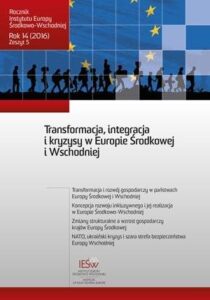Structural Change and Economic Growth in Central European Countries
ORCID: Tomasz Białowąs: 0000-0002-8898-9989
Strony: 121-139
Wydanie: Lublin 2016
DOI: --
Słowa kluczowe: Central European countries, economic growth, structural change
Abstrakt:
The aim of the paper is to analyze structural changes in Central European economies in 2000-2014 and to assess their impact on economic growth dynamics. Structural changes are one of the crucial factors contributing to an increase in labour productivity and economic growth. Depending on the patterns of workforce migrations and the rate of technological progress, their impact can be either positive or negative. In the Czech Republic, Slovakia and Hungary those changes meant decreasing shares of agriculture and industry in the creation of value-added accompanied by an increase of the service sector’s share in the economy. In Poland the changes were less significant, and included growth of the industry sector at the expense of the services. Existing economy structure determines sectoral specialization of production. Central European economies share significant comparative advantage in manufacturing, but prevalent industries are low-tech and of diminishing role in the world economy. Only Hungary has some comparative advantage in high-tech industries. The highest growth of labour productivity was achieved in manufacturing, it also had the largest contribution to the increase in total non-agricultural labour productivity. In 2002-2007 an increase in productivity occurring in the Czech Republic, Slovakia and Hungary was mainly due to technological progress while in Poland – due to workforce migration from agricultural sector to manufacturing and services. After 2008 the role of technological progress was less significant as it contributed to increased labour productivity only in Slovakia. Intersectoral migrations improved labour productivity in Poland and Hungary.

PDF: Pobierz